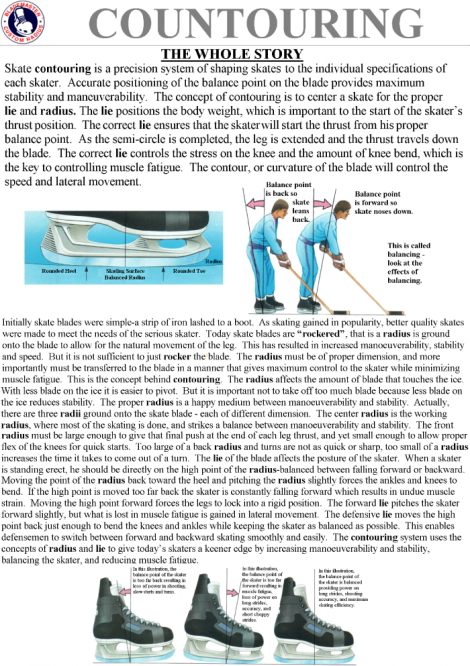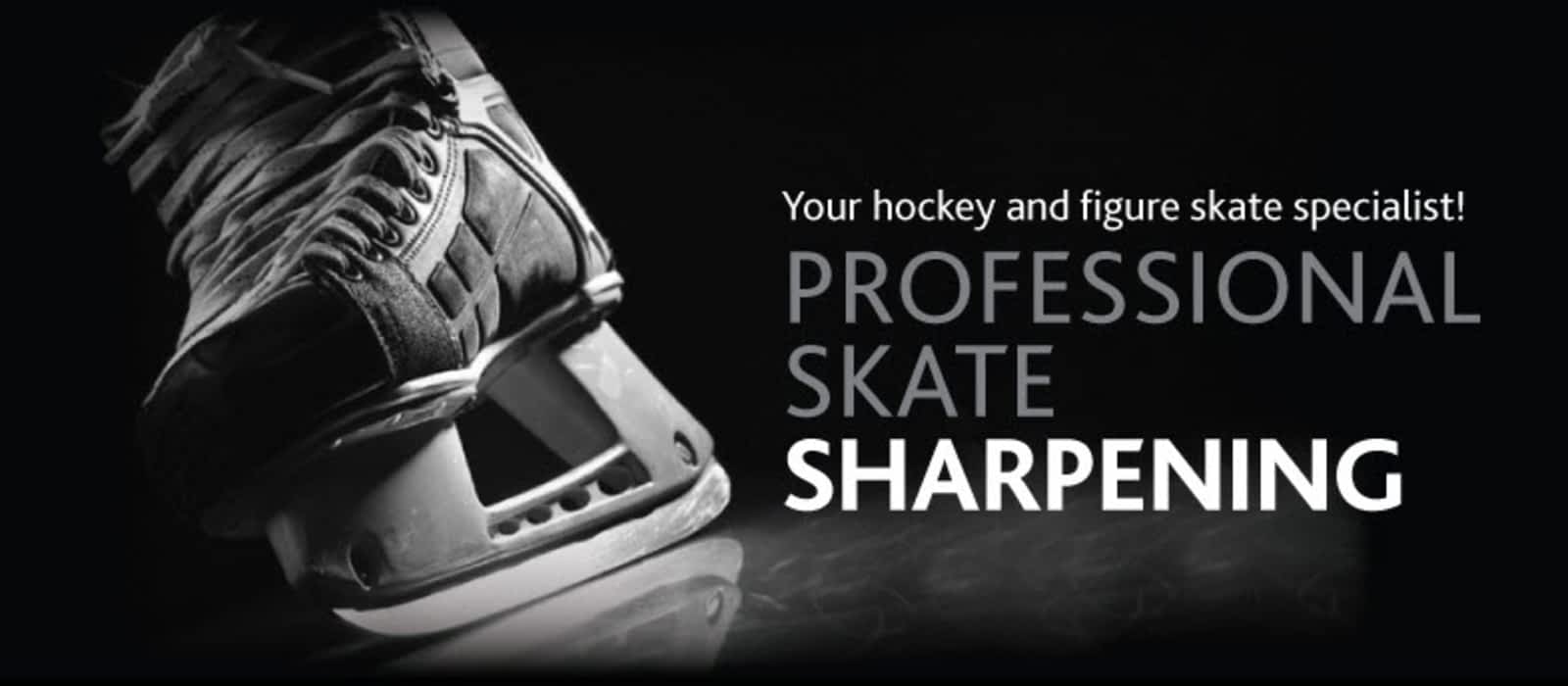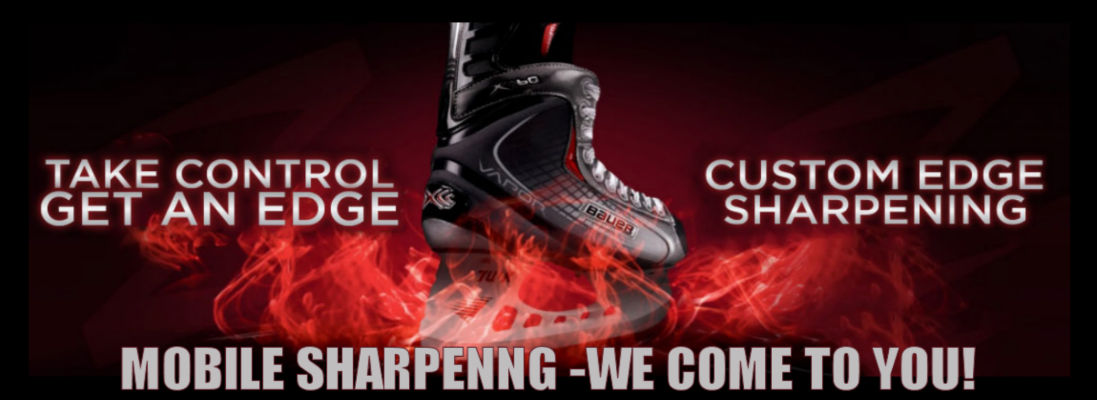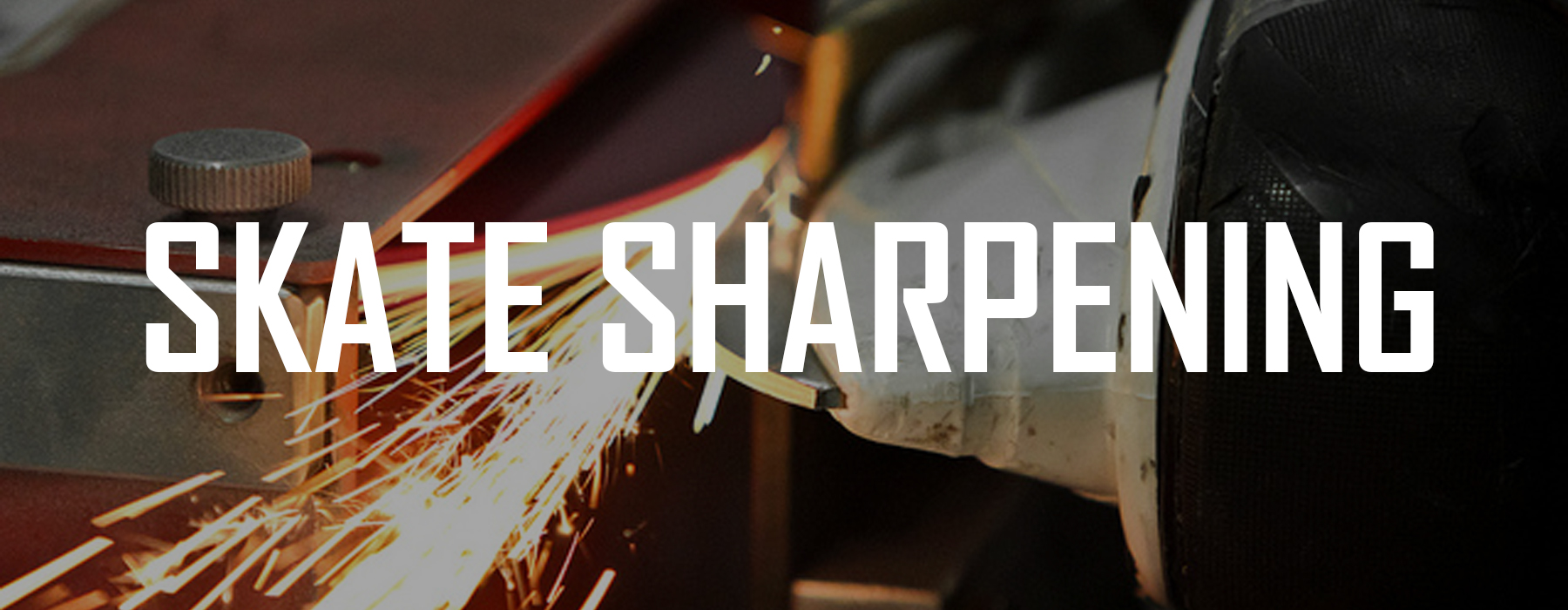Frequently Asked Questions
How often should I get my skates sharpened?
To simplify this answer, we suggest most hockey players should have their skates sharpened after 6-8 hours of skating. That said, sharpening comes down to a matter of preference. Some skaters are very hard on their edges and need them sharpened more frequently. Unfortunately, blade damage can occur at any time and is often unavoidable. For example, stepping on debris while walking on the ice, skating on rough ice or hitting another blade can damage edges and cause your blades to need sharpening. Blade quality comes into play as well. High quality skate blades hold an edge for a longer period of time due to their hardness level and material quality. To prolong your edge life, we suggest using skate guards to protect your blades, diligently clean and dry your blades after skating and be as careful as possible while walking in change rooms and hallways to reduce the likelihood of stepping on something that could damage your edges.
Here are some guidelines:
- If you feel like you need to get them sharpened, you probably do.
- Some players like to sharpen their blades between every game, while others may get them sharpened just a few times a season. Use your best judgment when it comes to your skates, pay attention to how they feel on the ice, or talk to an expert if you’re not sure.
- Some experts advise sharpening every 15-20 hours on the ice. This number may be lower if you know you tend to push hard on your edges or are skating on ponds or homemade ice.
- When you notice nicks on the edges of your blades
How do you know if your skates need sharpening?
- If you know it’s been a while since your blades have been sharpened, it’s a good idea to bring them in. Pay attention to how your skates feel on the ice. If things feel off, it’s good to get them checked out, and it may be time for sharpening.
One trick is to perform a fingernail test. Simply run your fingernail over the edge of your blade. If your nail glides across easily and doesn’t catch onto the edge of the blade, that’s a sign you’re due to have your blades sharpened. Also, check for nicks in your blades. If you notice any nicks, get your blades sharpened immediately.
How long does it take to get my skates sharpened?
- Please call or text 705.809.3434. Average time vary from 15 minutes to an hour. We do have the most skate sharpening machines in Barrie so our wait time is typically shorter.
What are my skate sharpening options?
- We offer a wide variety of hollow depths to suit any skater style. (1", 7/8", 11/16", 5/8", 9/16", 1/2", 7/16", 3/8") are the most common options. A deeper radius such as 7/16" will create a more pronounced concave groove into your blades, thus providing more grip. A shallower radius such as 11/16" will create a less pronounced concave groove into your blades, thus providing more glide. Custom skate sharpening and expert advice based on your specific skating style or discipline is free to call our clients. Contact Us for more information.
How long do ice skates last?
- This depends on your size, age, and how often you use your skates. Someone who is on the ice more frequently may need to replace their skates more often. Kids who play hockey may have to get new skates once a year, or more, to keep up with growth spurts. An average adult who spends about twice a week on the ice can expect to replace their skates roughly every five years.
Do goalie skates need to be sharpened differently than player skates?
- Goalie skates should typically be on the dull end of the spectrum compared to other players’ skates. This allows goalies to glide more easily.
Are figure skates sharpened differently than hockey skates?
- Figure skates are a different type of skate and constructed differently. They also serve a different purpose on the ice. Therefore, the blades should not be treated the same. A figure skater should find a blade sharpener like the Skaters Edge in Barrie that specializes in sharpening skates for figure skaters.
How difficult is it to sharpen skates? Certainly anyone can do it, right?
- Leaving your skate sharpening to the poorly trained will not only have a negative impact on your game, but also your blades, and thus your wallet. Skate sharpening is equal parts art and science. With over 20 years of experience sharpening skates and a lifetime of skating and playing hockey, we’re able to help guide skaters in determining the best “cut”, “grind” or “hollow” and “radius” for each type of skater.
What does “hollow or cut” mean?
- Hollow (a.k.a. grind or cut) relates to the profile cut into the blade. Hollowing out the middle of the blade produces two distinct edges. With a traditional radius, the depth of the hollow determines both the energy required to “glide” on the ice and the “bite” or ability to turn and stop on the ice. The more glide, the less bite. The more bite, the less glide. With BFD (or flat bottom sharpening), the “bite” can be adjusted similarly to traditional (ROH) radius, but the glide is always approximately equivalent to 2″ hollow, providing maximum glide regardless of the amount of bite.
What is Flat Bottom Sharping (BFD)?
- The BFD (Blade Form Dressing) or Flat Bottom skate sharpening is very different than traditional sharpening. The BFD has a flat bottom and the edges are slightly higher. So when gliding, blades don’t cut as deeply into the ice, but sit on the new flat profile creating increased glide, awesome speed and less drag (which skaters expend less energy). When turning, leaning and stopping the edges dig in with amazing results. So for example, you can achieve the glide equivalent to a 2″ hollow, yet at the same time, the turning capacity of a 3/8-1/2″ hollow. How cool is that!
- Unlike conventional radius of hollow (ROH) sharpening that puts a hollow (or arch) between two edges, the BFD is a totally new way to sharpen and shape an ice skate blade. With a conventional ROH sharpening, a skater has to choose between grip/bite and speed. With the BFD, skaters get both maximum bite (when it’s needed) PLUS maximum glide.
What does “contouring, radius or rocker” mean?
- Contouring, radius or rocker refers to the shape and tilt of the bottom of the skate blade, (think bottom of a rocking chair). The graphic below gives a brief overview of contouring.




